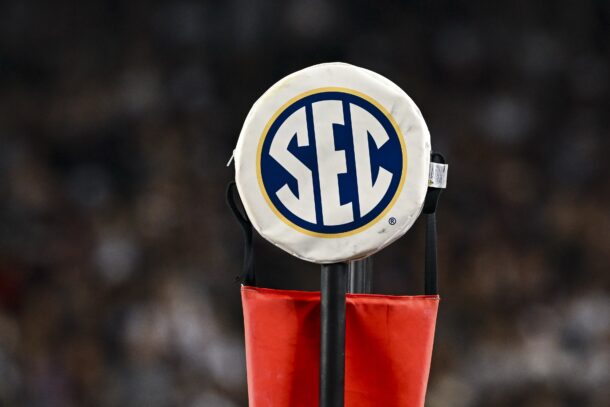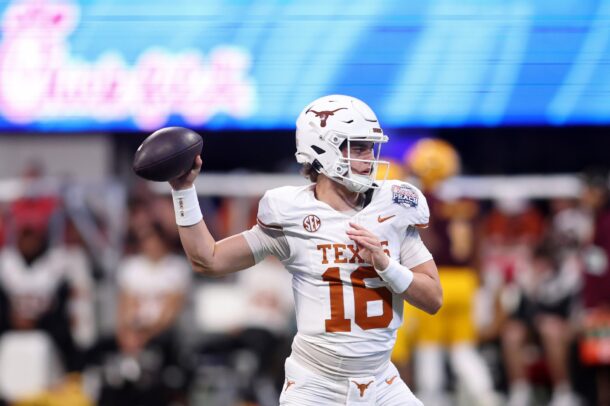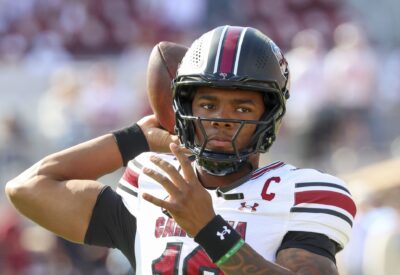Ad Disclosure

Over the last two-plus seasons, Auburn has had a revolving door at defensive coordinator. Ellis Johnson, the Tigers’ DC in 2014, was replaced by Will Muschamp, whose successor for 2016 is Kevin Steele, who manned the same position for LSU last year.
All caught up? It’s enough to make your head spin. The turnover makes sense when you realize that Auburn has finished no better than 10th in the SEC in rushing defense over the last five years.
Here is how the Tigers’ rushing defense performed in some key categories in 2015:
Rushing yards allowed per game: 182.5 (11th in the SEC)
Most rushing yards allowed in a 2015 game: 411, LSU
Rushing TDs allowed: 24 (tied for 11th)
100-yard rushers allowed: 7
Defending against outstanding running backs such as Leonard Fournette, Nick Chubb and 2015 Heisman Trophy winner Derrick Henry is not the easiest proposition in the world, but that’s life in the SEC. For what it’s worth, under Steele in 2015, LSU finished third in the conference in rushing yards allowed per game (122.9) behind only Alabama and Arkansas.
Of course, LSU was able to succeed against the run because it had extensive talent and depth, especially on its defensive line. Steele won’t have that luxury this year at Auburn, but he obviously has to find a way to make the Tigers better.
Front seven
Expect Steele to use multiple schemes, which means we can expect to see a 4-3 alignment along with some 4-2-5 looks, and he might even go to a 4-3 by standing up some ends and linebackers. In other words, his approach is not that much different than those of his predecessors.
When Auburn faces spread teams such as Ole Miss, Texas A&M and Mississippi State, Steele more than likely will use two linebackers and employ a hybrid LB/safety. When the Tigers go up against power running teams such as LSU, Georgia, Alabama and Arkansas, he will turn to Montravius Adams, Byron Cowart, Carl Lawson and others to shut them down.
With only six total tackles and six QB hurries in 13 games during his freshman season, Cowart was more of a dud than a stud. But the Florida native was a five-star recruit in 2015, and Steele and Auburn are counting on a sophomore surge in production.
Last year, Auburn’s red zone run defense wasn’t that bad, but that’s a relative statement when you consider that the Tigers are in the same division with a team that has arguably the best run defense in the nation.
Inside the 20-yard line in 2015, Auburn surrendered 2.04 yards per carry, which was tied with Ole Miss for second in the SEC, according to cfbstats.com. That figure pales in comparison to what the Crimson Tide yielded per attempt in that situation – a measly 0.73.
However, in short-yardage situations, the Tigers were not nearly as good. On third down with one to three yards to go, Auburn yielded 207 yards on 48 carries in its 12 regular season games for a 4.31 average per attempt that was only 10th in the SEC. The Tigers also surrendered four rushing TDs, which was tied for next-to-last in the conference ahead of only Kentucky, which allowed eight.
Who is the secondary enforcer?
Hard-hitting safety Rudy Ford, who led Auburn and was third in the SEC with 118 tackles last season, is the Tigers’ enforcer in the secondary. When Steele goes to a 4-2-5 look, Ford will probably be the guy who plays the hybrid nickel position, which he manned in the spring.
Honorable mention for this spot goes to fellow defensive back Carlton Davis, who made the All-SEC Freshman Team in 2015. Playing in all 13 games, the Miami native had 56 tackles, 8 pass breakups and 3 INTs, and Auburn is hoping he develops into an all-conference cornerback this year.
Greatest concern
Linebacker will be the biggest concern with returnee Tre’ Williams and Illinois graduate transfer T.J. Neal leading a group that loses three starters and 601 career tackles.
One stat that must improve in 2016
Last season, Auburn finished 11th in the SEC in yards allowed per attempt (4.54), a figure that was even worse on first (4.56) and second down (4.91). Granted, the SEC has some of the top running backs in the sport, but allowing opponents nearly 10 yards on their first two plays would be hard to overcome even if Auburn had a powerful offense in 2015, which it certainly didn’t, so these figures clearly need to be better.
Auburn kicks off its season with an immediate test for its run defense — a visit by Heisman Trophy finalist Deshaun Watson and national runner-up Clemson on Sept. 3. Steele essentially has 12 weeks to figure out how to stop the potentially explosive Tigers, but he has some decent pieces in place. Five of his returning starters have a significant amount of experience, and that — coupled with Steele’s reputation as a decent defensive coordinator — should help AU improve against the run in 2016.
Considering how bad Auburn has been in that department lately, any kind of progress should be expected. However, if the Tigers can’t figure out how to stop the run this season, Auburn’s revolving door at defensive coordinator could keep spinning.
Stan Chrapowicki is a contributing writer for Saturday Down South. He covers SEC football, Alabama and Auburn.




